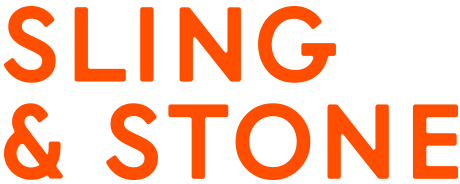
They say that during a crisis, creativity and innovation often flourish. And wouldn’t this be the perfect time for humanity to finally nail time travel? You’d be forgiven for wanting to skip 2020 (its devastating bushfires, global public health crisis and economic question marks) and jump straight into 2021.
But until that day comes, brands, individuals, and businesses are tasked with quickly finding their place in the new normal. Recently our CEO and founder shared his advice for leaders on communicating during COVID-19, covering how to talk to staff, customers, partners, and other stakeholders. Today we’re going to go a little deeper into the nuts and bolts of communicating directly with your customers. Because while comms might seem confusing or risky right now — yes, there have been cases of misfires, tone-deaf comms, and cliches during this crisis — it’s mission-critical that you don’t go silent.
How brands behave now will be remembered in life after the pandemic. What should businesses be doing in this environment? https://t.co/f1UnzyMDWj #COVID19 pic.twitter.com/AyFeDbM2tt
— Kantar (@Kantar) April 20, 2020
Research by Kantar found that while 77 percent of consumers do expect brands to ‘be helpful’ in the current climate, only a small 8 percent feel they should stop advertising. Your story and messaging might have to change — but your brand shouldn’t disappear. In fact, it’s vital that you stay top of mind with your customers and potential customers right now so you don’t have to rebuild from square one when the worst of this crisis passes.
That’s where a stellar comms strategy comes in. Here are some tips to help you navigate communicating with customers when the world is in crisis.
Listen, listen, listen and then listen some more
Any solid strategy needs an in-depth understanding of what matters to your customer and the best way to develop that is by listening to what they’re saying. This is even more important during a crisis, where it’s likely many people’s usual circumstances and habits have shifted. Your instincts about your customers are important, but you can’t rely on them completely. Take it a step further by using the different communications tools at your disposal to help tackle meaty questions like — How have my customers been affected? What issues are they facing? What are their priorities right now?
Use a combination of these techniques
- Capture comments on your brand Instagram and Facebook posts
- Has the tone or content shifted significantly in the past few weeks?
- Are new problems or concerns coming up?
- Are your customers’ sharing personal stories about their experience with your brand during the crisis (good or bad)?
- Run searches on key hashtags and keywords on social media to gauge current conversation on the industry
- Look at industry hashtags like #aussiefintech or #agchatau to see if common themes are coming up in conversation
- Search your brand name and handle to capture positive and negative feedback
- Search keywords to see if there’s been a spike in conversation that might be relevant to your business (for example, if you’re a food brand, you might want to see what is shining through in the conversation surrounding #IsoBaking adventures?)
- Pull replies on Tweets from your brand and executive team
Taking time to listen to what your customers are saying will give you valuable data points to understand what they are experiencing right now. From this, you can run an in-depth analysis on what is being said about your brand and industry and what the current crisis might have changed.
In the UK, Lush responded to concerns about hygiene by offering free handwashing with its soap products in all stores.
Normally, this tweet would be trying to make you laugh. But friends, these are not normal times. So instead, we’re using this stage to share a statement from our CEO regarding COVID-19. Thank you for understanding. Stay safe: https://t.co/6fMZFGDVqp
— dennysdiner (@DennysDiner) March 17, 2020
Then it’s time to act
Just like you listen and respond in a conversation with a friend, once you’ve heard from your customers, it’s time to act on their input. So take all those insights about what’s important to them and what the recent crisis might have changed about their lives and turn it into tangible business moves.
This might look like
- Tweaking a product (or launching a new one) that helps solve a problem
- Offering home delivery as an option or expanding your delivery radius
- Shopping habits are shifting and your customers are likely looking for something they can have swiftly and securely delivered to their front door
- Seafood wholesale, Clamms, started offering their daily catch online so Aussies could get fresh, high quality ingredients at home
- Communicating what safety measures you are putting in place (or introducing new ones)
- Introducing ways to reward customers for loyalty
- Looking at alternatives for services or events that can’t take place as normal
- The Sydney Writers’ festival decided to re-imagine its format for online delivery, rather than rescheduling for later in the year
- Get feedback from your customers on what they would prefer (and that you can still offer safely)
The key here is to show that you have valued their time and input and that their needs are your number one priority.
Consider your communication
You’ve decided what you’re going to do, so now it’s time to tell your customers about it. You probably already get how much information customers have been flooded with over the past few weeks on a personal level (you’re experiencing this crisis too).
To get cut through, you should be informative and helpful. Keep your customers informed of how you will serve them and care for them during this period with updates on changes that will impact them, such as:
- Changes to your service
- Woolworths kept customers informed about changes to service and helped solve a community issue by launching a dedicated shopping hour for the elderly and people with disabilities.
- Cancellation of events or services
- Oztix is keeping a running list with status of live events, as well as sharing tips for supporting live music while venues are closed down.
- Wait times for restock or disruptions to delivery timelines
When you do communicate, be mindful of your tone — a wrong choice of words could make it appear that you’re trying to capitalise off a crisis, despite your best intention. Be careful about ‘looking for the bright side’ when a lot of people are hurting. Empathy is key, so look back at the kind of language that came up during your social listening and consider yours in the context of your customers’ experiences.
There is still room here for communication that isn’t strictly informative
- An expression of solidarity and support to your customers
- Information on your social responsibility initiatives and how you’re supporting crisis relief
- Charity initiatives (share why this is important and how you are contributing)
- Tips for working from home or social distancing
- Heartwarming or human stories from your team
Think about your long term relationships with customers rather than switching into immediate tactics mode. If you don’t know what to say yet, it’s okay to spend some time planning and waiting for the right moment. You want to be the brand that offered something helpful, useful, or fun — not the brand who was adding to the noise.
Stay flexible with how you communicate
This crisis has dissolved certain preconceptions about how things ‘have to be done’ — conferences, events, and universities are being run in completely digital formats, cafes are selling groceries and takeaway alcohol, and competitors are putting their collective brain power together to find solutions to global problems. New circumstances require flexibility and a certain willingness to embrace the unknown.
These principles apply to your communications too. Just because you have always done something one way (like gone to a trusted media target or kept clear of new social media formats), doesn’t mean that still stands true today. Consider how consumer trends and habits are shifting and what this might mean for your brand. For example, audience numbers and newsroom structures are evolving in response to the crisis — some reporters have been reassigned to cover the crisis and only the crisis, while other outlets are looking for good news or human interest stories to break up the monotony of crisis coverage. Ask yourself what stories your brand has to tell and what outlets might be the best fit for that right now?
Breakfast and news programs surge on last year’s Good Friday figures by as much as 98% https://t.co/O1bg9AacWv
— Mumbrella News (@Mumbrellanews) April 11, 2020
In general, consumption of traditional media and social media content has increased dramatically over the past few weeks with the public seeking out news, information and entertainment while isolating at home. Trusted and accredited sources like Nielsen can help you keep across these trends and decide what channels are the best fit for your message, based on whether you’re looking to reach mass audiences or a more niche, targeted community.
Think about how your different communications channels can complement each other. While a journalist might want to hear about your groundbreaking new product that is helping hospital workers stay safe, they are unlikely to see news value in a change to your delivery methods. That kind of information would sit better on your owned accounts where customers are actively seeking out information about your service.
As we seek out new ways to communicate and connect with one another, diverse, moving, weird, and wonderful conversations are taking place on social media every day. American brand, Steak—ummm made the most of this and went viral with a Tweet about scientific accuracy and preventing the spread of misinformation. Playing off the widespread trend of ‘woke brands’ and brands with purpose, the frozen meat company caught attention by combining a grave message with a bizarre branded twang (including a self-referential admission it was a mere meat product). The creative approach earned the brand international media attention, thousands of positive brand interactions (and here’s hoping some new customers). Take some time to consider your own social media presence right now and whether you have something valuable to offer to these organic conversations and trends.
friendly reminder in times of uncertainty and misinformation: anecdotes are not data. (good) data is carefully measured and collected information based on a range of subject-dependent factors, including, but not limited to, controlled variables, meta-analysis, and randomization
— Steak-umm (@steak_umm) April 7, 2020
At the end of the day, every brand is different. There is no one size fits all approach that will deliver results for every business, 100% of the time, but these tips will help you get thinking about the best way to communicate with your customer during this period of crisis (or until we find the blueprint for that time machine).

